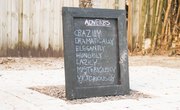English as a second language, or ESL, warm-up activities help adult students move into learning mode and become better acquainted with their classmates. Warm-ups are especially useful at the start of class as a transition between lessons and a review of previous work. However, the most effective warm-ups aren't just mechanical activities; they require students to interact with each other and use real-world language in a meaningful way.
Learning About Classmates
Simple questionnaires can help students bond with their classmates better. For example, write four or more questions on a topic on the white board. Possible topics include the seasons, favorite movies and hobbies. For hobbies, you could write, "Do you play golf?" and "Can you play chess?" Each student asks the questions to a partner.
For a variation of this exercise, make photocopies of your list of questions. Ask students to stand up and walk around the room. Each student must ask three or more people the same questions.
White-board Artists
Send two or more students to the white board for an information gap activity. With your back to the board, hold up a simple picture, such as a picture of a man walking a dog next to a lake. Don't let the students at the white board see the picture. Then call on different students in their seats to give a one-sentence description of the picture. The students at the board attempt to draw the picture based on the descriptions. As a variation, use a simple line diagram for the picture, such as an cross in the middle of a circle.
Chain Stories
Practice verbs and improve students' recall in English with a chain story. For example, say, "Yesterday, I cleaned the garage." Call on individual students to repeat your sentence and add a similar statement: "Yesterday I cleaned the garage and baked cookies." Each successive student must repeat the entire story and add to it. See how long students can keep going.
For beginning ESL adults, practice with simple vocabulary, such as clothing or food words. For example, "I went grocery shopping, and I bought apples." Each successive student adds an additional food word to the list.
Strip Stories
Students can practice problem solving with a strip story. Type out a story of six or more sentences with each sentence on a separate line. Make one copy for every four students in the class, and cut each copy into strips of one sentence each. Keep each page in a separate pile, but mix up the sentences. Put students into teams of four, giving each team a set of strips. Instruct each group to work together to reconstruct the story. Check the results by having students write the story on the board. As a variation, use a simple poem or a stanza from a song instead of a story.
Who Am I?
Tape a paper with the name of a famous person to the back of each student. Use names of people they know, such as well-known entertainers, but don't let students see whose name they have. Students walk around the class asking yes/no questions of each other and try to guess what's on their back. For adult beginners, make the game easier by using the names of animals, foods or household objects, such as a refrigerator or sink.











